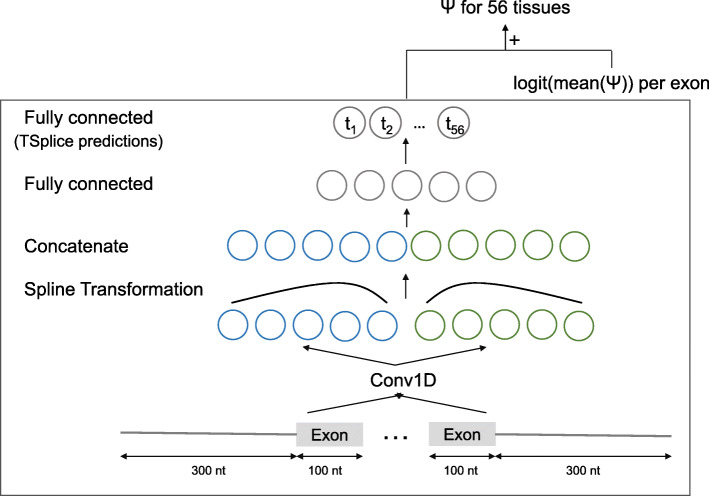Fig. 3.
Model architecture to predict tissue-specific percent spliced-in. The model TSplice consists of one convolution layer with 64 length-9 filters capturing sequence elements from one-hot encoded input sequences. This is followed by two spline transformation layers modulating the effect of sequence elements depending on their position relative to the acceptor splice sites (leftmost layer) and the donor (rightmost layer). The outputs of the two spline transformation layers are concatenated, and global average pooling is applied along the sequence dimension. This is then followed by feeding two consecutive fully connected layers. The last fully connected layer outputs a 56-dimension vector which are the predicted log odds ratios of tissue-specific Ψ versus tissue-averaged Ψ for the 56 tissues of the ASCOT dataset. Natural scale tissue-specific Ψ are obtained by adding predicted odds ratios with measured tissue-averaged Ψ on the logit scale. Batch normalization was used after all layers with trainable parameters except the last fully connected layer. In total, the model has 8024 trainable parameters

